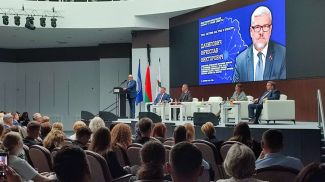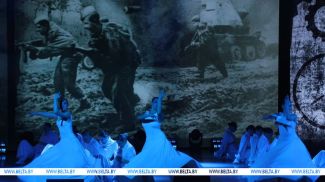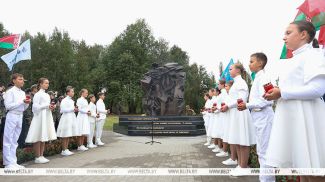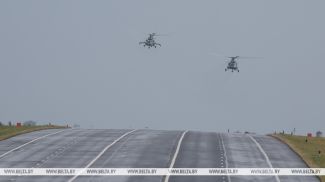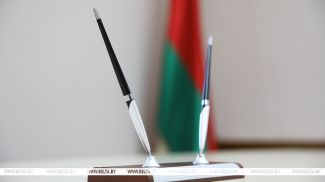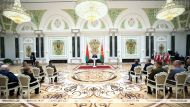BEREZA, 14 September (BelTA) – Without preserving the legacy left by our forefathers, we can potentially lose the future, too. Head of the Belarus President Administration Igor Sergeyenko made the statement at a session of the Bereza District Executive Committee on 14 September, BelTA has learned.
Igor Sergeyenko said: “Right now the world is experiencing serious economic problems, sanctions, and an aggravation of the international situation. Combat operations are taking place in a number of regions not far away from us. Today we discuss how we should preserve historical and cultural legacy. From the outside we may look like idealists who know nothing about life. It is not so. The idea to name this year the Year of Historical Memory was born for a reason. It all began when we talked to various worker collectives in different parts of the country.”
Igor Sergeyenko pointed out that Belarusians now celebrate the People's Unity Day. “Not everyone understands what this day means for the history of our country. It is necessary to tell young Belarusians about events of 17 September. It is essentially the third most important state holiday in addition to Independence Day and Victory Day,” he added.
In particular, events of 17 September are intertwined with the history of Bereza District. A concentration camp was located nearby in 1934-1939. People, who disagreed with Polish authorities, were imprisoned there. The camp ceased to be on 17 September 1939. An obelisk was erected at the site in the middle of the 20th century to commemorate the prisoners. Two granite slabs were added to the memorial. Images on them resemble walls and the barbed wire of the concentration camp. Igor Sergeyenko laid flowers at the commemorative sign and honored memory of the victims.
So-called red barracks are located next to the monument. It is a building where the concentration camp was located. A temporary exposition was opened on the first floor a year ago. A permanent one is available now. Three chambers are open to visitors. A solitary confinement cell has been recreated in one of them. Another chamber shows regular cells. The exposition showcases genuine photos and documents, placards and leaflets, recollections and personal belongings of the inmates. A mockup of the main buildings of the concentration camp is available. A projector, multimedia boards, and VR goggles help visitors feel the dramatic nature of the past. An audio guide is available. The Bereza History and Local Lore Museum loaned its assets. The national history museum and the Brest Oblast Local Lore Museum did the same.
“You have something to teach history with and demonstrate. It can be useful not only for young locals but for residents of Brest Oblast and the entire country,” Head of the Belarus President Administration Igor Sergeyenko said.
Participants of the Bereza District Executive Committee session paid attention to historical and cultural legacy and to personnel training and ideological work in worker collectives. Igor Sergeyenko went on saying: “Ideological work has many aspects. It involves not only the organization of awareness-raising days but knowledge about the situation in a worker collective, provision of assistance with resolving housing problems or other problems, nurture based on traditions. We don't want indifferent people to do these jobs. They have to talk to people instead of brushing them aside. If a person has a problem (either a personal one or one connected with the public stance), the problem will not go away on its own. You have to pass information, educate, and deal with things so that people would see results.”




